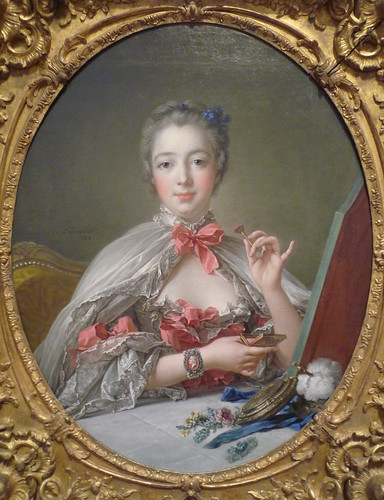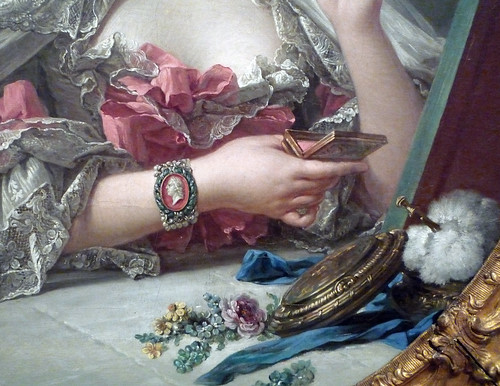 I'm not really asking, mind you; it's come to the point now where it goes without saying. That aside, when I recently read that the Getty in Brentwood would be hosting a major exhibition that recreates daily life in an 18th century Parisian Townhouse, those immortal words from The Graduate immediately came to mind. When confronted with the sensory overload, who wouldn't want the hand of a more experienced lover to guide them? The Lover, in this situation, is the Getty, and we are the wide eyed ingenues looking for an education not found in textbooks. Bring on the butterfly kisses and the obsessive phone calls. We're ready for love, Mrs. Robinson.
I'm not really asking, mind you; it's come to the point now where it goes without saying. That aside, when I recently read that the Getty in Brentwood would be hosting a major exhibition that recreates daily life in an 18th century Parisian Townhouse, those immortal words from The Graduate immediately came to mind. When confronted with the sensory overload, who wouldn't want the hand of a more experienced lover to guide them? The Lover, in this situation, is the Getty, and we are the wide eyed ingenues looking for an education not found in textbooks. Bring on the butterfly kisses and the obsessive phone calls. We're ready for love, Mrs. Robinson. The exhibit, which runs April through August, will be a significant experience for anyone enamored with French design. It will be a curated collection of pieces loaned from other institutions; an assemblage of Furniture, Art, Accessories, Fashion, Jewels, Porcelains, Textiles and anything else that exemplifies the decadence and joie de vivre of the period. I'm hoping for some suggestive engravings spotlit in a darkened room. I can't wait to be wooed by a well turned leg, as long as it has a gilt bronze mount.
 |
| Fragonard's The Swing. Lovers play in a secluded wood. As the young woman casts off her shoe, the young man hidden in the hedge is granted a view of the Loire Valley. |
At this time, the English Garden style was being refined and defined, and the French took to the idea of the 'natural landscape', which under the careful eye of the Landscape Designer, would be manipulated to provide the optimal view from a given vantage point (rip out a tree, build a waterfall, move a hill). This was quite a contrast to the formality of French gardens during the Baroque. The French would absorb elements of the naturalistic English garden, as well as thematic ideas like flirtatious milkmaids and randy shepherds frolicking in the countryside, and turn them into romantic, or naughty, tableaux painted for the amusement of the French court (see Fragonard's The Swing).
 |
| Madame de Pompadour sits in elegant repose for her favorite painter, Francois Boucher. |
Not one to just set the fashion, she was a major patron of the arts (sponsoring Painter, Poets, and Writers) and a well educated woman who could bend the ear of the most important politicos. She was also very shrewd; she guaranteed her position of power by introducing Louis to secondary Mistresses (he had quite the carnal appetite, and there's only so much one woman can take) who were never quite as clever or beautiful or charismatic as she was, but were still suitable stand-ins. You could say she was adept at the art of job security.
-Ian
 |
| Boucher paints Pompadour during her Toilette. The Rococo period ushered in a new feeling of intimacy. Clad in a dressing gown, her body language is informal; it's as if she were about to tell us a secret in the privacy of her boudoir. |
 |
| The Cameo bracelet not only reflects the fashion, but also shows a subtle tribute to her lover, Louis XV. The casual placement of accouterments indicates that we have caught her during a more private moment. |
 |
| The Blind Man's Bluff, by Fragonard. A young farm boy and girl (dressed in Taffeta work clothes) play amidst a rustic country setting. Pure fantasy. |

Ian, I remember that Fragonard painting from my high school french class. I always thought it was hard to see the lover in the bushes as "young." You see, he is wearing a powdered wig and that does not convey youth and virility to me.
ReplyDeleteDavid, you're obviously not going to the right underground clubs.
ReplyDelete